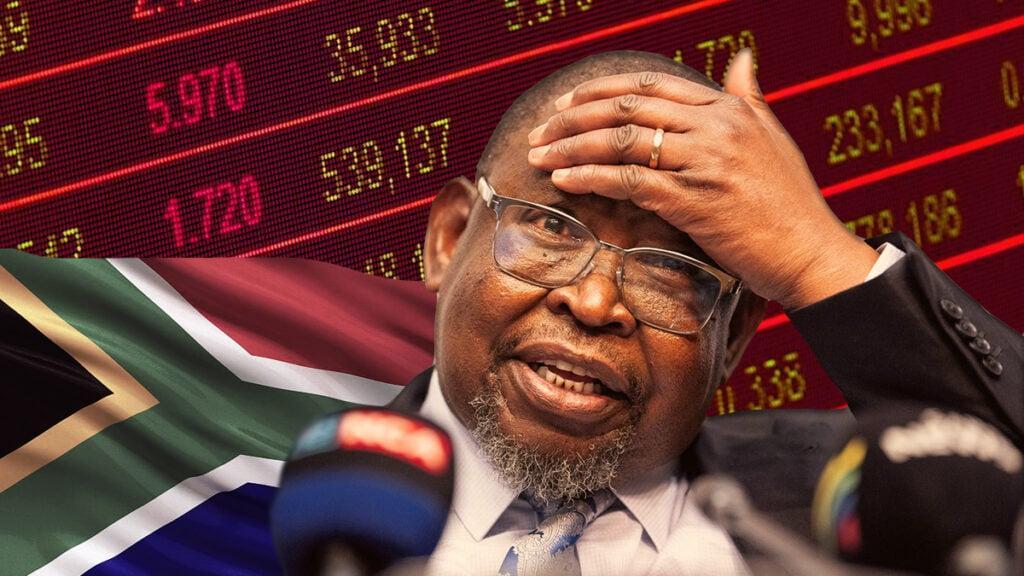Africa-Press – South-Africa. South Africa’s declining economic performance over the past 15 years has translated into a looming financial crisis, with the government’s debt burden at risk of becoming unsustainable.
The state’s debt burden as a share of GDP has already crossed 75% and is expected to stabilise later than previously thought due to continued economic underperformance, resulting in slower tax revenue growth.
As a result, debt-servicing costs are beginning to crowd out spending in other areas, hampering economic growth and service delivery.
This fiscal situation may be made worse by the potential impact of US tariffs on South Africa and its trading partners, with slower economic growth knocking tax revenue and widening the government’s deficit.
The African Development Bank (AfDB) highlighted some of these worrying trends in its latest Country Focus Report on South Africa for 2025.
It said that South Africa’s fiscal health remains a key concern for international institutions and global investors, with it steadily deteriorating over the past decade.
The last time the government ran a full budget surplus was the 2007/08 financial year. Since then, state spending has ramped up while growth has slowed.
This has manifested into a looming financial crisis, with government debt soaring and tax revenue stagnating.
In the 2023/24 fiscal year, this trend continued, with the government’s full budget deficit widening to 5% of GDP from 4.4% in the prior year.
The AfDB said this was due to the continued trend of increased public expenditure and lower tax collections, with total revenue declining to 27.1% of GDP.
This declining revenue is reflective of a narrowing tax bas amid reduced collections from import duties, VAT, the General Fuel Levy, and personal income tax.
In contrast, total expenditure increased to 32.1% of GDP in 2024 due ot rising debt-servicing costs and a growing public sector wage bill.
As a result, South Africa’s debt-to-GDP increased to 76.1% at the end of the 2024 fiscal year, with debt-servicing costs now amounting to over R1 billion a day.
This is only expected to continue, with the state set to borrow R581.9 billion in 2025 from R415.7 billion in 2024, according to the AfDB.
The graph below shows South Africa’s fiscal deficit and debt burden over the past five years, with a forecast for the coming two financial years.
South Africa is vulnerable
South Africa’s precarious financial situation leaves it extremely vulnerable to external shocks, such as geopolitical tension, disruptions to global trade, or an economic downturn.
As a result of the government’s deteriorating financial health, it has very little room to support the economy in the event of a severe shock.
Such a shock may come in the form of elevated tariffs imposed on South African goods exported to the United States.
The United States is South Africa’s second-largest single export destination after China, benefiting from preferential access under the African Growth and Opportunity Act (AGOA).
This agreement grants duty-free access to various products, including vehicles, citrus fruits, wines, and industrial goods.
The AfDB warned that the imposition of tariffs threatens to disrupt these long-standing trade advantages, with even reduced duties of 10% being enough to effectively nullify AGOA.
If elevated tariffs, such as the announced 30% duty on South African goods, are imposed, then exporters will face immediate price disadvantages in the US market.
This will reduce the competitiveness of South African exports and lead to cancellations, reducing shipment volumes and financial losses.
The AfDB said that as a result, export earnings in key South African sectors will decline, slowing economic growth, reducing company profitability, and constraining job creation.
All of this will impact the country’s finances, with slowing economic growth translating into reduced revenue collection, potentially widening the fiscal deficit.
This may force the government to increase its borrowing for the 2025 fiscal year, adding to its debt pile, or cut spending in some areas.
Another option is to increase the pressure on SARS to close the country’s estimated R800 billion tax gap to make up the potential revenue shortfall. This may impact economic growth.
For More News And Analysis About South-Africa Follow Africa-Press






